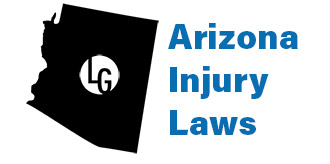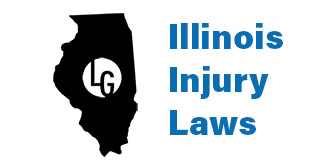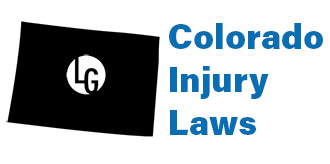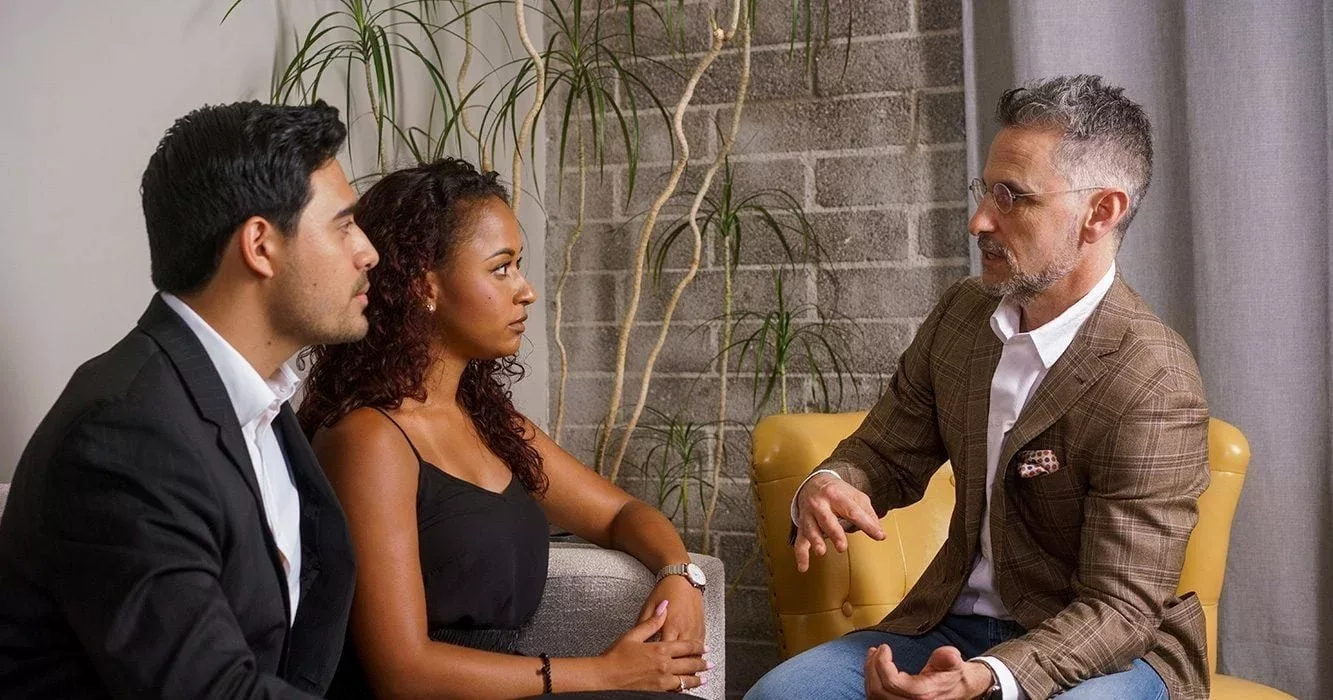
Surprising to me, I hear this question a lot “What Exactly Does a Personal Injury Lawyer Do?”
As a seasoned personal injury lawyer with over three decades of experience, I can sometimes forget that many people don’t fully understand what personal injury lawyers do. Many times, the question also revolves around “Is it worth it?” or “Can’t I just negotiate with the insurance company myself?”
The aim of this post is to demystify the often complex and misunderstood role of a personal injury lawyer. We’ll explore what we do, how we can help, and why the right legal guidance is critical in these trying times. This is not just about legal processes and statutes; it’s about understanding the human element behind each case and the comprehensive approach we at Lamber Goodnow take to ensure justice and recovery for our clients.
Every year, millions of Americans find their lives turned upside down due to personal injuries, with the National Safety Council reporting that in 2020 alone, an estimated 55.4 million people sought medical attention for injuries in the United States.
This staggering number is more than just a statistic; it represents countless stories of pain, struggle, and the quest for justice.
Let’s explore the complexities of personal injury law together and understand its essential role in bringing balance back to the lives of those impacted.
Understanding the Role of a Personal Injury Lawyer
At its core, personal injury law is about restoring balance. It’s about helping individuals who have been harmed physically or emotionally. This harm can arise from a myriad of situations – ranging from everyday occurrences like car accidents and slip-and-fall incidents to more complex scenarios involving workplace injuries or medical malpractice.
Diverse Case Types
In my years of practice, I have encountered a wide spectrum of personal injury cases, each presenting unique challenges and requiring tailored approaches. Here are some of the common types:
- Car Accidents: These are among the most frequent causes of personal injury claims. Victims can suffer severe injuries, and navigating the aftermath often involves dealing with insurance companies and legal complexities.
- Workplace Injuries: These cases can vary from construction accidents to repetitive stress injuries in an office setting. They often involve workers’ compensation laws and the intricacies of employer liability.
- Medical Malpractice: These cases are particularly challenging, involving healthcare professionals’ failure to provide adequate treatment, leading to further injury or illness. They demand a deep understanding of both legal and medical issues.
- Slip-and-Fall Incidents: Often underestimated, these cases can lead to serious injuries. They revolve around proving negligence in maintaining safe premises.
A Holistic Approach
The role of a personal injury lawyer extends beyond the courtroom. It’s about understanding the physical, emotional, and financial toll an injury can take on an individual and their family. My approach has always been holistic, focusing on the complete recovery of the client – not just securing financial compensation but also ensuring they receive the necessary medical care and support to navigate the aftermath of their injury.
Negotiation and Litigation
A significant part of my role involves negotiating with insurance companies and other parties to secure fair compensation without the need for a trial. However, when necessary, I am prepared to take a case to court to fight for my client’s rights.
Advocacy for Safer Communities
Beyond individual cases, personal injury law plays a crucial role in advocating for safer practices and policies. By holding negligent parties accountable, we not only seek justice for our clients but also contribute to creating a safer environment for everyone.
“As a personal injury attorney with over 30 years of experience, I understand the profound impact of accidents and injuries on individuals and their families. Every case is more than a legal challenge; it’s a life profoundly altered, a story needing a voice. In my role, I’m not just an advocate for justice but a steadfast ally during one of the most challenging times in a person’s life. Navigating the intricacies of personal injury law, from understanding the nuances of each case to tenaciously advocating for rightful compensation, is not just my profession—it’s my commitment to ensuring that every client’s story is heard and honored. At Lamber Goodnow, we’re not just lawyers; we’re partners in your journey towards justice and healing.”
Personal Injury Law Across Different States
Personal injury laws can vary significantly from state to state. For example, in Arizona, the statute of limitations for personal injury cases is generally two years from the date of the injury or its discovery. This is a critical aspect to consider, as failing to file within this timeframe can result in losing the right to sue. Similarly, states like Illinois and Colorado have their own specific laws and regulations governing personal injury claims.
Arizona Injury Laws
 Arizona’s personal injury law framework is unique, particularly due to its adoption of the pure comparative negligence rule. This rule allows a plaintiff to recover damages even if they are significantly at fault – up to 99% at fault, in fact. The compensation awarded to the plaintiff is adjusted based on their degree of fault. For example, if a plaintiff is found 60% at fault and the defendant 40%, the plaintiff can still recover 40% of the total damages. This approach is distinct from many other states and reflects Arizona’s commitment to ensuring that victims receive some level of compensation, even if they were partly responsible for their injury.
Arizona’s personal injury law framework is unique, particularly due to its adoption of the pure comparative negligence rule. This rule allows a plaintiff to recover damages even if they are significantly at fault – up to 99% at fault, in fact. The compensation awarded to the plaintiff is adjusted based on their degree of fault. For example, if a plaintiff is found 60% at fault and the defendant 40%, the plaintiff can still recover 40% of the total damages. This approach is distinct from many other states and reflects Arizona’s commitment to ensuring that victims receive some level of compensation, even if they were partly responsible for their injury.
Another key aspect of Arizona’s personal injury law is the statutes of limitations. These laws set the time limits within which an injured party must file a lawsuit. The timeframe varies depending on the type of injury and the specific circumstances of the case. These statutes are crucial because they dictate the window during which legal action can be initiated. Once this period expires, the injured party may lose the right to claim damages.
In my professional experience, understanding and navigating these distinct aspects of Arizona’s legal landscape is crucial for anyone seeking to file a personal injury lawsuit. My role as an attorney is to guide clients through these complexities, ensuring they understand the implications of the pure comparative negligence rule on their case and advising them on the critical importance of adhering to the statutes of limitations. This ensures that individuals who have suffered due to others’ negligence can effectively pursue the compensation they rightfully deserve.
Illinois Injury Laws
 Illinois’ personal injury laws are distinctive in their approach to claims and compensation. The state recognizes three primary grounds for personal injury claims: negligence, strict liability, and intentional wrongs. Negligence, the most common basis, involves failure to exercise reasonable care under specific circumstances. Strict liability applies when injury results from an action regardless of intent, such as product defects. Intentional wrongs cover actions like assault and battery. These legal principles ensure that personal injury claims in Illinois can address a broad spectrum of circumstances, ranging from accidents to intentional harm, providing a comprehensive legal framework for compensating victims. For more detailed information, visit the Legal Information Institute.
Illinois’ personal injury laws are distinctive in their approach to claims and compensation. The state recognizes three primary grounds for personal injury claims: negligence, strict liability, and intentional wrongs. Negligence, the most common basis, involves failure to exercise reasonable care under specific circumstances. Strict liability applies when injury results from an action regardless of intent, such as product defects. Intentional wrongs cover actions like assault and battery. These legal principles ensure that personal injury claims in Illinois can address a broad spectrum of circumstances, ranging from accidents to intentional harm, providing a comprehensive legal framework for compensating victims. For more detailed information, visit the Legal Information Institute.
Colorado Injury Laws
 Colorado’s personal injury laws encompass a range of legal grounds for claims, similar to other states. These grounds include negligence, where liability arises from a failure to exercise due care; strict liability, which holds defendants accountable regardless of intent, particularly in cases like product defects; and intentional wrongs, including acts like assault and battery. These legal frameworks allow for claims arising from various types of harm, whether to the body, emotions, or reputation, providing a comprehensive approach to personal injury cases.
Colorado’s personal injury laws encompass a range of legal grounds for claims, similar to other states. These grounds include negligence, where liability arises from a failure to exercise due care; strict liability, which holds defendants accountable regardless of intent, particularly in cases like product defects; and intentional wrongs, including acts like assault and battery. These legal frameworks allow for claims arising from various types of harm, whether to the body, emotions, or reputation, providing a comprehensive approach to personal injury cases.
In my professional experience, dealing with Colorado’s personal injury laws requires a deep understanding of these diverse legal grounds. Navigating the nuances of each case, whether it involves negligence, strict liability, or intentional harm, is crucial. My role as an attorney is to ensure that clients are well-informed about their legal options and the specific aspects of Colorado law that pertain to their case, helping them to pursue appropriate compensation effectively.

The Journey of a Personal Injury Case
The journey of a personal injury case is a meticulous and strategic process. As an experienced attorney at Lamber Goodnow, I guide clients through each phase, ensuring they understand every step and feel supported.
Initial Consultation
The initial consultation is a crucial first step in the journey. Here, I meet with potential clients to hear their stories and understand the circumstances of their injury. This is more than just a factual briefing; it’s an opportunity for me to connect with clients on a personal level, to understand not just the incident but how it has affected their lives.
During this meeting, I assess the merits of the case, considering factors like the extent of injuries, the apparent liability of the other party, and the potential legal challenges we might face. This is also the time for clients to understand their rights and the legal process. We discuss potential strategies and outcomes, ensuring clients have a realistic expectation of the journey ahead.
Investigation of the Claim
The investigation phase is where the groundwork for the entire case is laid. This is a detailed and often complex process, involving several key activities:
- Gathering Evidence: This includes collecting police reports, medical records, and any available physical evidence from the accident scene. We may also need to secure surveillance footage or photographs that captured the incident.
- Interviewing Witnesses: Witnesses can provide invaluable insights into what happened. We conduct thorough interviews to gather these perspectives, which can significantly strengthen the case.
- Expert Consultation: In many cases, we consult with experts in fields relevant to the case, such as medical professionals, accident reconstruction specialists, or financial analysts, to provide insights into the cause of the injury and its impact.
- Documentation: Proper documentation is vital. We meticulously compile all the evidence and information into a coherent and persuasive narrative.
Filing the Lawsuit
Filing the lawsuit marks a critical turning point in the case. This formal action officially initiates the legal process. It involves drafting and filing a complaint with the court, which outlines the basis of the claim, the injuries suffered, and the damages being sought.
The defendant is then served with the lawsuit and has a specific period to respond. This marks the beginning of a series of legal procedures, including discovery, where both parties exchange information and prepare their arguments.
In filing a lawsuit, we send a strong message about the seriousness of the claim. It underscores our preparedness to go to lengths to seek justice and fair compensation for our clients. It’s a step that requires thorough preparation and timing, ensuring that every aspect of the case aligns with the goal of achieving the best possible outcome for our clients.
Throughout these phases, my role as a personal injury lawyer is not just to navigate the legal complexities but also to ensure that clients feel heard, informed, and reassured. At Lamber Goodnow, we pride ourselves on not just being lawyers, but being advocates and partners to our clients on their journey to justice and recovery.
Navigating the Legal Process
Navigating the legal process in a personal injury case is a multifaceted and strategic endeavor. It requires a delicate balance between aggressive advocacy and nuanced negotiation, skills that I’ve honed over my 30 years with Lamber Goodnow.
Mediation and Negotiation
Mediation and negotiation are critical stages in the legal process. This phase is where I engage directly with the opposing side to discuss a potential settlement. It’s a step that demands not only a deep understanding of the law but also skills in negotiation and a keen sense of strategy.
- Strategic Communication: The art of negotiation involves effective communication. This means presenting our case in a manner that highlights its strengths while understanding the opponent’s position and potential weaknesses.
- Client Interests at Forefront: Throughout the negotiation, my primary focus is on securing a resolution that aligns with the client’s best interests. This involves considering not just the financial aspects of the settlement but also how it addresses the client’s broader needs and goals.
- Mediation Sessions: In some cases, we may participate in mediation sessions. These sessions, typically overseen by a neutral third party, provide a forum for both sides to discuss the dispute and explore potential resolutions.
Trial Preparation and Representation
If negotiations do not result in a satisfactory settlement, the next step is preparing for trial. This phase is intensive and requires meticulous attention to detail.
- Gathering Evidence: This involves organizing all the collected evidence, including witness statements, expert testimonies, and documentation, to build a robust case.
- Legal Arguments: We develop legal arguments that effectively convey the merits of the case. This often involves legal research to support our position and counter the opposition’s arguments.
- Client Preparation: I also prepare my clients for what to expect during the trial, including how to handle cross-examinations and how to present their testimony effectively.
Case Resolution
The resolution of a personal injury case can take several forms, depending on how the legal process unfolds.
- Settlements: Many personal injury cases are resolved through settlements negotiated outside of court. These agreements are carefully crafted to ensure that clients receive fair compensation that covers their damages, including medical expenses, lost wages, and pain and suffering.
- Trial Verdicts: In cases that go to trial, the resolution comes in the form of a verdict from a judge or jury. A successful trial requires not just presenting a compelling case but also effectively managing the complex dynamics of a courtroom.
- Post-Trial Negotiations: Even after a trial, negotiations can play a role, especially in finalizing the details of a judgment or in discussing potential appeals.
In every phase of the legal process, my aim is to navigate these complexities with skill and dedication, always with the goal of achieving the best possible outcome for my clients. Whether it’s through adept negotiation or vigorous representation in court, my commitment at Lamber Goodnow is to advocate tirelessly for the rights and interests of those who have entrusted me with their cases.
Beyond the Courtroom
The impact and responsibility of a personal injury lawyer extend far beyond the courtroom’s walls. At Lamber Goodnow, my role as a lawyer encompasses not just representing clients in legal disputes but also engaging in broader advocacy and educational efforts. These efforts contribute to public safety and informed communities, which are critical in preventing personal injuries.
Advocacy and Public Safety
Advocacy for public safety and legal reforms is a cornerstone of my work. This facet of my role involves several key activities:
- Public Safety Campaigns: I participate in and often lead campaigns aimed at raising awareness about public safety issues. These campaigns might focus on topics such as the dangers of distracted driving, the importance of workplace safety regulations, or the need for better medical practices to prevent medical malpractice.
- Legal Reforms: I work towards legal reforms that enhance public safety. This involves advocating for laws and regulations that hold negligent parties accountable and deter potential harmful actions by individuals and organizations. It’s about creating a legal environment that prioritizes the well-being of individuals.
- Community Involvement: I actively engage with the community, participating in local events, and speaking at schools and community centers. This involvement provides opportunities to educate the public on safety measures and legal issues that could impact their lives.
Educational Role
Education plays a pivotal role in my approach to personal injury law. By educating clients and the public, we empower them with knowledge that can prevent future injuries.
- Client Education: Educating my clients is about more than just briefing them on their case. It involves helping them understand their rights, the legal process, and how to navigate the aftermath of an injury. This education empowers them to make informed decisions about their health, safety, and legal options.
- Public Awareness: I also focus on educating the broader public. This includes writing articles, participating in interviews, and conducting workshops. The aim is to raise awareness about personal safety, the common causes of injuries, and how individuals can protect themselves and their families.
- Collaborations with Organizations: Collaborating with healthcare providers, safety organizations, and educational institutions amplifies our efforts. These collaborations often involve developing and disseminating materials that educate about injury prevention and safety.
- Online Resources: Utilizing the firm’s website and social media platforms, we provide accessible educational resources. These might include blog posts, infographics, and videos covering a range of topics from basic legal rights to detailed analyses of personal injury law trends.
In every aspect of my work, whether it’s representing clients in the courtroom, advocating for safer laws and practices, or educating the public, the goal remains the same: to enhance the safety and well-being of individuals and communities. My commitment extends beyond merely securing legal victories; it encompasses a broader mission to create a meaningful and positive societal change.
Personal Experience and Insights
Over my thirty years of practice, I have witnessed the profound and often life-altering impact of personal injuries on individuals and families. This experience has not only shaped my understanding of the law but also deepened my commitment to each client I represent.
Understanding Each Client’s Unique Story
The journey through a personal injury case is as unique as the individuals involved. I have seen a wide range of cases, from straightforward slip-and-fall incidents to complex cases involving catastrophic injuries. Each story is different, and understanding the nuances of each client’s situation is vital.
- Listening to Clients: The first step is always to listen. Understanding a client’s perspective – how the injury occurred, how it has affected their life, and what their concerns and goals are – is crucial.
- Empathizing with Their Situation: Empathy is at the heart of my practice. Recognizing the emotional and physical pain clients are experiencing is key to effectively advocating for them.
- Recognizing the Impact: Whether it’s a loss of income, mounting medical bills, or the emotional toll of an injury, I work to understand the full extent of the impact on my clients’ lives.
Client-Centric Approach
My approach to each case is tailored to the individual needs and circumstances of the client.
- Customized Legal Strategies: I develop legal strategies that are tailored to the specific details of each case. This might involve focusing on particular aspects of the law, leveraging certain pieces of evidence, or taking a unique approach to negotiations or trial.
- Holistic Recovery Focus: The goal is not just to win a case but to facilitate a holistic recovery for the client. This means addressing not only the legal aspects but also guiding clients towards the physical and emotional support they need. It’s about helping them rebuild their lives after an injury.
- Client Empowerment: Part of my role is to empower clients. This involves educating them about the legal process, their rights, and the likely outcomes of their case. Informed clients are better able to make decisions that align with their goals and interests.
Emphasizing Understanding and Empathy
My decades of experience have reinforced the importance of understanding and empathy in legal practice. Every client’s story matters, and my role is to give a voice to those stories in the legal arena.
- Compassionate Representation: In dealing with clients who have undergone traumatic experiences, compassion is key. It’s about more than just legal representation; it’s about providing a supportive, understanding environment where clients feel heard and respected.
- Building Trust: Establishing trust with clients is fundamental. They need to feel confident in my ability to represent their interests effectively and sympathetically.
Prioritizing a client-centric approach, I ensure that every client receives not only expert legal representation but also the empathy, understanding, and comprehensive support they deserve.
What Makes a Successful Injury Lawyer
Expertise and Specialization
A successful personal injury lawyer is defined by a deep expertise and specialization in the field. This specialization allows for a nuanced understanding of various personal injury cases, be it auto accidents, workplace injuries, or medical malpractice. It’s about knowing the intricacies of the law and how it applies to each unique scenario. For instance, at Lamber Goodnow, our specialization equips us to navigate the complex legal landscapes, ensuring that our clients’ cases are handled with the highest level of professionalism and knowledge.
Communication Skills and Client Relationships
Equally important are the communication skills and the ability to build strong client relationships. The foundation of a successful lawyer-client relationship is trust, and this is cultivated through clear, consistent, and empathetic communication. Understanding a client’s needs, concerns, and expectations, and being able to convey legal strategies and concepts in an understandable manner, is crucial. This is where Lamber Goodnow excels, ensuring that our clients are always informed and comfortable with the proceedings of their case.
Track Record and Case Outcomes
A lawyer’s track record and case outcomes are tangible indicators of success. They reflect not only the ability to win cases but also the capacity to secure outcomes that meet the specific needs and interests of clients. At Lamber Goodnow, we pride ourselves on a history of favorable settlements and verdicts, which stand as a testament to our commitment to achieving the best possible results for our clients.
Adaptability and Continuous Learning
The legal landscape is ever-changing, and a successful personal injury lawyer must be adaptable and committed to continuous learning. This means staying abreast of the latest legal developments, trends, and techniques in personal injury law. It also involves being adaptable in legal strategies and approaches, based on evolving case law, legislation, and clients’ changing circumstances. At Lamber Goodnow, we are dedicated to ongoing education and adaptation, ensuring that our legal services are not only current but also forward-thinking.
In summary, a successful personal injury lawyer combines expertise and specialization with exceptional communication skills and client relationships, a proven track record of favorable outcomes, and a commitment to adaptability and continuous learning. These qualities define the legal professionals at Lamber Goodnow, making us a trusted choice for those seeking justice and compensation in personal injury cases.
Cost of Hiring a Personal Injury Lawyer
Navigating the financial aspects of hiring a personal injury lawyer is crucial for clients as they consider legal representation. Understanding the cost structure and what it entails is key to making informed decisions.
Understanding Contingency Fees
The most common payment structure in personal injury cases is the contingency fee. This means that as a lawyer, I do not charge any upfront fees. Instead, my fee is a percentage of the settlement or court award and is paid only if we win the case. This arrangement aligns the lawyer’s interests with those of the client, as both parties have a vested interest in a favorable outcome.
At Lamber Goodnow, we ensure transparency in our contingency fee agreements. The percentage varies depending on the case’s complexity and stage at which it is resolved (pre-litigation or post-trial). Typically, contingency fees range from 25% to 40% of the recovered amount. We discuss this openly with our clients, ensuring they understand and are comfortable with the agreement.
Additional Legal Expenses
In addition to attorney fees, personal injury cases may incur other legal expenses. These can include court filing fees, costs for obtaining medical records, expenses related to expert witnesses, and costs for trial exhibits. At Lamber Goodnow, we are upfront about potential additional costs and, in many cases, cover these expenses upfront, to be reimbursed from the settlement or award.
We also ensure that our clients understand which expenses are recoverable and which are not, and how these will be handled in the event of both winning and not winning the case.
Comparing Costs and Benefits
When considering hiring a personal injury lawyer, it’s important to compare the costs and benefits. While there are costs involved, the value a skilled lawyer brings can significantly outweigh these. A competent attorney can navigate the complexities of the legal system, negotiate effectively with insurance companies, and maximize the compensation received.
For many clients, the decision to hire a lawyer on a contingency basis means access to legal representation that they might not otherwise afford. It also means having an advocate who is motivated to achieve the best possible outcome.
Understanding the cost structure, including contingency fees and additional legal expenses, is critical when hiring a personal injury lawyer. At Lamber Goodnow, we aim to make this process as transparent and understandable as possible, ensuring our clients can make informed decisions about their legal representation while focusing on their recovery.
The Value of a Personal Injury Lawyer
Selecting the right personal injury lawyer can significantly influence the outcome and experience of navigating a legal claim. At Lamber Goodnow, the combination of expertise, proven success, and a compassionate approach sets us apart and underlines the value we bring to each case.
Why Choose Lamber Goodnow
The decision to choose Lamber Goodnow for legal representation in personal injury cases is backed by several compelling reasons:
Extensive Experience
- Broad Range of Case Knowledge: With three decades in the field, I have encountered and successfully navigated a wide array of personal injury cases. This experience spans from automobile accidents and slip-and-fall incidents to complex medical malpractice and wrongful death cases.
- Deep Legal Understanding: The depth of my legal knowledge, honed over years of practice, allows for a nuanced understanding of each case. This expertise is crucial in navigating the often complex legal and procedural nuances of personal injury claims.
- Adaptability to Changing Laws: Personal injury law is dynamic, with frequent changes in statutes and legal precedents. My extensive experience ensures that I am always abreast of these changes, providing clients with current and effective legal strategies.
Proven Track Record
- Success in Settlements and Verdicts: The track record of Lamber Goodnow speaks for itself. We have secured numerous favorable settlements and verdicts, often surpassing the expectations of our clients.
- Strategic Negotiation Skills: The success in settlements is a testament to strategic negotiation skills, ensuring clients receive fair compensation without the uncertainty of trial whenever possible.
- Courtroom Excellence: When cases do go to trial, our proven track record in the courtroom, backed by meticulous preparation and compelling advocacy, stands as a testament to our commitment to client success.
Dedication to Client Well-being and Justice
- Client-Centered Approach: Every decision and strategy is centered around the well-being of the client. This approach ensures that their needs, both immediate and long-term, are the priority in every aspect of the legal process.
- Holistic Support: Beyond legal advice, we provide support that addresses the physical, emotional, and financial aspects of recovery from a personal injury. This holistic approach aids in the overall recovery and well-being of our clients.
- Commitment to Justice: My dedication to justice is not just about winning cases. It’s about ensuring that clients feel validated, their stories are heard, and their rights are vigorously defended. This commitment extends to advocating for broader changes that enhance public safety and prevent future injuries.
The value of a personal injury lawyer lies in their ability to effectively navigate the legal system, advocate for their clients’ rights, and provide compassionate support throughout the process. At Lamber Goodnow, we combine extensive experience, a proven track record, and a deep commitment to client well-being and justice, ensuring that each client receives the best possible representation and support. Choosing the right lawyer can make all the difference, and Lamber Goodnow stands ready to provide that critical difference.
Bottom Line
In this comprehensive exploration of the role and responsibilities of a personal injury lawyer, we have uncovered the multifaceted nature of this profession. From the initial consultation, through the intricate process of investigating and filing a lawsuit, to the complexities of navigating the legal system, personal injury law is a field that requires a unique blend of expertise, empathy, and dedication.
Recap of Key Points:
- Expertise and Specialization: The importance of specialized knowledge in handling a wide array of personal injury cases cannot be overstated.
- Client-Centric Approach: The need for empathy and understanding in building strong client relationships is paramount.
- Successful Outcomes: The track record of a lawyer, characterized by favorable settlements and verdicts, speaks volumes about their capability and effectiveness.
- Adaptability and Continuous Learning: Staying abreast of the latest legal developments and being adaptable in strategies is crucial in this ever-evolving field.
- Costs and Benefits: Understanding the contingency fee structure and other legal expenses is essential for clients considering legal representation.
As we navigate the often complex and challenging landscape of personal injury law, it’s clear that the right legal guidance is indispensable. At Lamber Goodnow, we embody these principles, offering not just legal expertise but a commitment to each client’s holistic well-being.
If you or a loved one is navigating the aftermath of a personal injury, know that you don’t have to face this challenge alone. The right legal partner can make all the difference in your journey towards justice and recovery. Contact Lamber Goodnow today for a consultation. Let us put our expertise, track record, and compassionate approach to work for you, ensuring that your story is heard and your rights are fiercely protected. Together, we can strive for the favorable outcome you deserve.
Frequently Asked Questions About Personal Injury Law
Q: What Types of Compensation Can I Seek in a Personal Injury Case?
Answer: In a personal injury case, you can seek various types of compensation including medical expenses, lost wages, pain and suffering, and sometimes punitive damages. The specific compensation depends on the details of your case and the extent of your injuries.
Q: How Long Does a Typical Personal Injury Case Take to Resolve?
Answer: The duration of a personal injury case can vary significantly, ranging from a few months to several years. The timeline depends on factors like the complexity of the case, the willingness of parties to negotiate, and the court’s schedule.
Q: Do I Always Need to Go to Court for a Personal Injury Claim?
Answer: No, not all personal injury cases go to court. Many are settled out of court through negotiations. At Lamber Goodnow, we strive to reach fair settlements without trial whenever possible, but we are fully prepared to go to court if it’s in the best interest of the case.
Q: How Do Personal Injury Lawyers Charge for Their Services?
Answer: Most personal injury lawyers, including Lamber Goodnow, work on a contingency fee basis. This means you don’t pay any upfront fees. The lawyer’s fee is a percentage of the settlement or court award and is paid only if you win the case.
Q: What Should I Do Immediately After an Injury to Help My Case?
Answer: After an injury, seek medical attention immediately, report the incident (e.g., to your employer, a business, or the police), document everything (take photos, keep medical records), and avoid discussing the incident on social media. Contact a personal injury lawyer as soon as possible.
Q: Can I Handle a Personal Injury Claim on My Own Without a Lawyer?
Answer: While it’s possible to handle a personal injury claim on your own, it’s not recommended. A skilled personal injury lawyer like Marc Lamber can navigate the complex legal system, negotiate with insurance companies, and ensure you receive fair compensation.
Q: How Do I Know if I Have a Valid Personal Injury Claim?
Answer: A valid personal injury claim typically involves proving that another party’s negligence or intentional action caused your injury. An initial consultation with Lamber Goodnow can help determine the validity of your claim based on the specifics of your situation.


